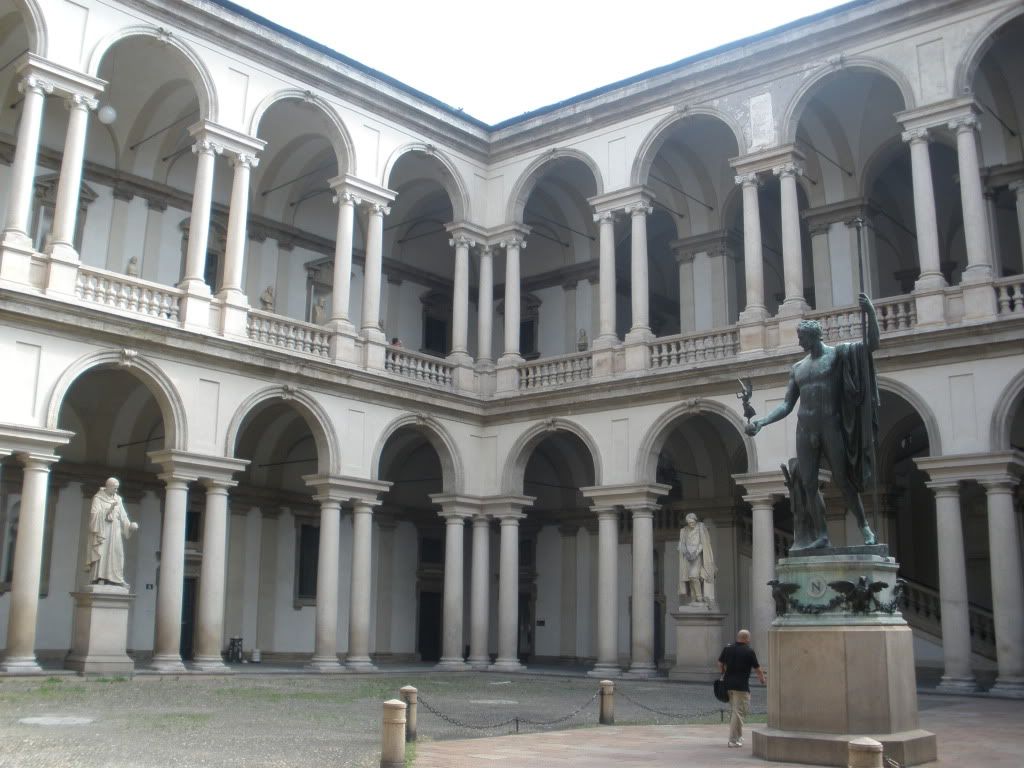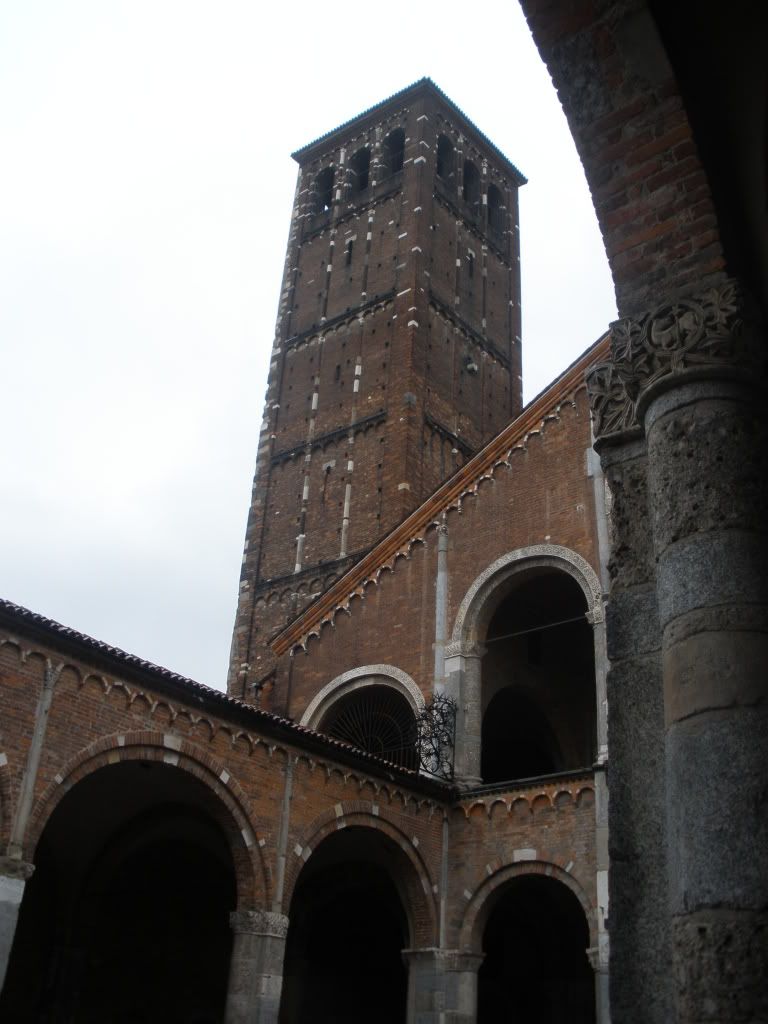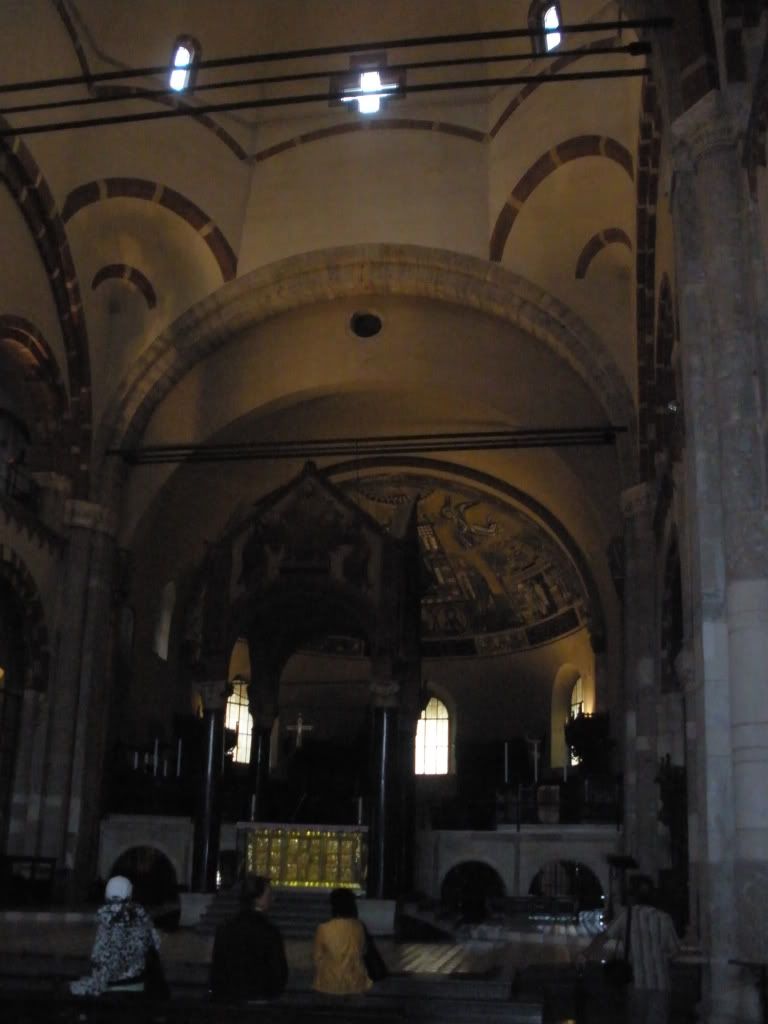Wandering through the city, at the entrance to the historic Brera quarter we encountered the beautiful church dedicated to Santa Maria del Carmine of which we haven't read before in any guide. When we entered into its interior we found a real little gem of Milan. This brief description of its history that I present to you, we read in the church.
It was built in 1400 for Gian Galeazzo Visconti on an old Carmelite instituition which was abandoned because of the neighbouring castle in construction. Planned by Bernado da Venezia according to a typical square design, already used by the architect for the church del Carmine di Pavia, the building had many interruptions that lasted until 1456 with the intervention of Pietro Solari. Transformed in the Baroque era, the church was brought back to gothic form by the radical intervention of the architects Giuseppe Pestagalli (1826-39) and Carlo Maciachini (1880) who also planned the facade, and Ambrogio Annoni in 1912. Inside the church, the sculptures, paintings and wooden inlay from the 15th-17th centuries, are all of note and there are two surviving cloisters in which fragments of roman and medieval sculptures can be found as well as parts from the fifteenth century which come from sepulchral monuments which were once in the church.
 Pinacoteca di Brera
Pinacoteca di BreraThe Pinacoteca di Brera is an art collection in Milan, Italy. It contains one of the foremost collections of Italian paintings. The Pinacoteca di Brera is Milan's most outstanding museum and is considered one of the most prestigious art collections of the world. The collection was founded by the Austrian Hapsburgs in the late 18th century. Napoleon dramatically enlarged the collection as he planned for Milan to become a major European capital. Once Napoleon was defeated, the art works remained in Milan instead of being redistributed to the original owners. The patrons of the collections believed that a museum should benefit the whole community, and thus preserved it for visitors.
Saint Ambrogio
One of the most ancient churches in Milan, it was built by Saint Ambrogio in 379-386, in an area where numerous of the Roman persecutions had been buried. The first name of the church was in fact Basilica Martyrum.
In the following centuries the edifice underwent several restorations and partial reconstructions, assuming the current appearance in 1099, when it was rebuilt in Romanesque architecture.
The basilica has two bell towers. The right one, called dei Monaci ("of the Monks"), is from the 9th century and has a severe appearance. The left and higher one dates to 1144, the last two floors added in 1889. The interior of the basilica has the same size as the external portico. Notable is the heavily restored apse mosaic, portraying the Christ Pantokrator and dating from the early 13th century. There are mosaics of about 470 in the oratory of San Vittore in Ciel d'Oro.
The church also houses the tomb of Emperor Louis II, who died in Lombardy in 875.
In August 1943 the Anglo-American bombings heavily damaged the Basilica, in particular the apse and surrounding area.
La Scala Opera House
 |
| The great Maria Callas |






Nema komentara:
Objavi komentar